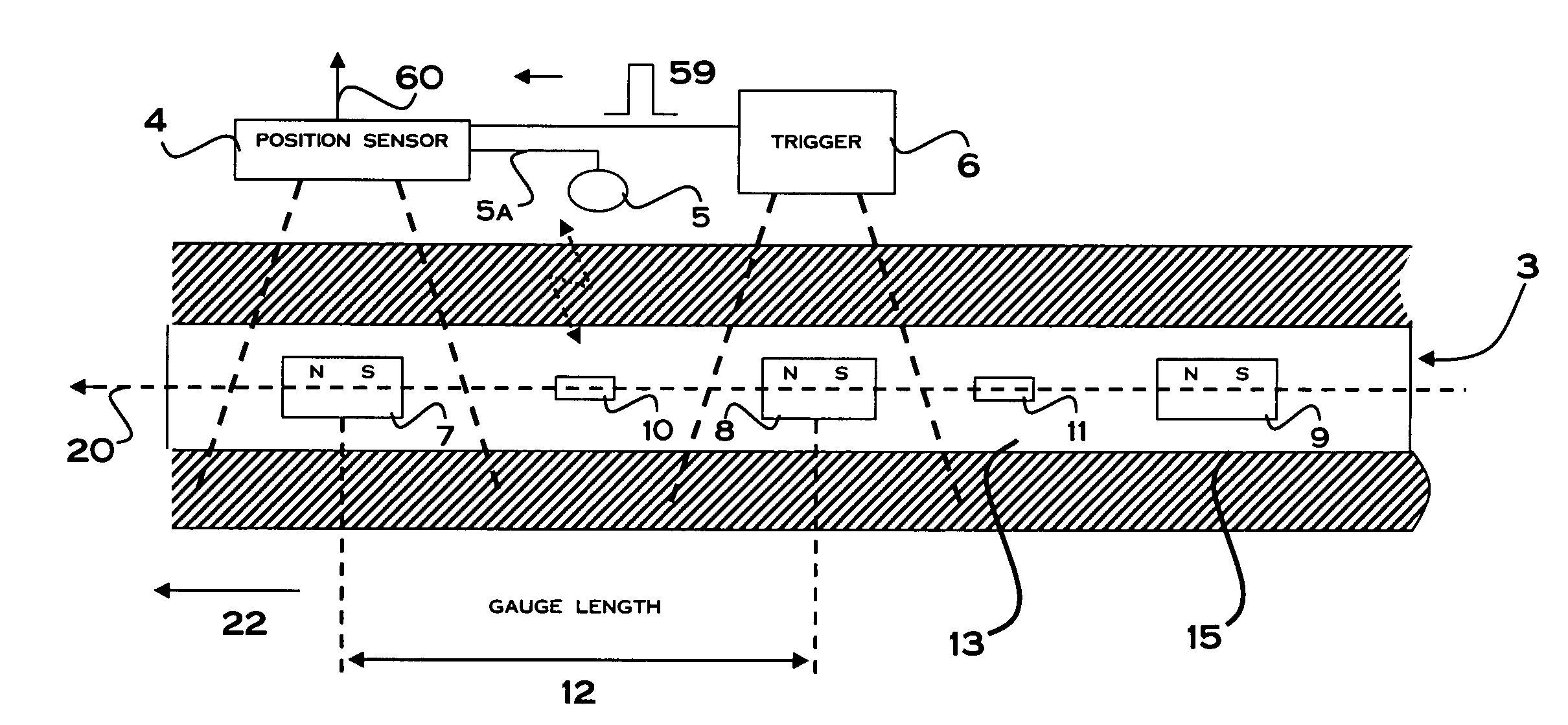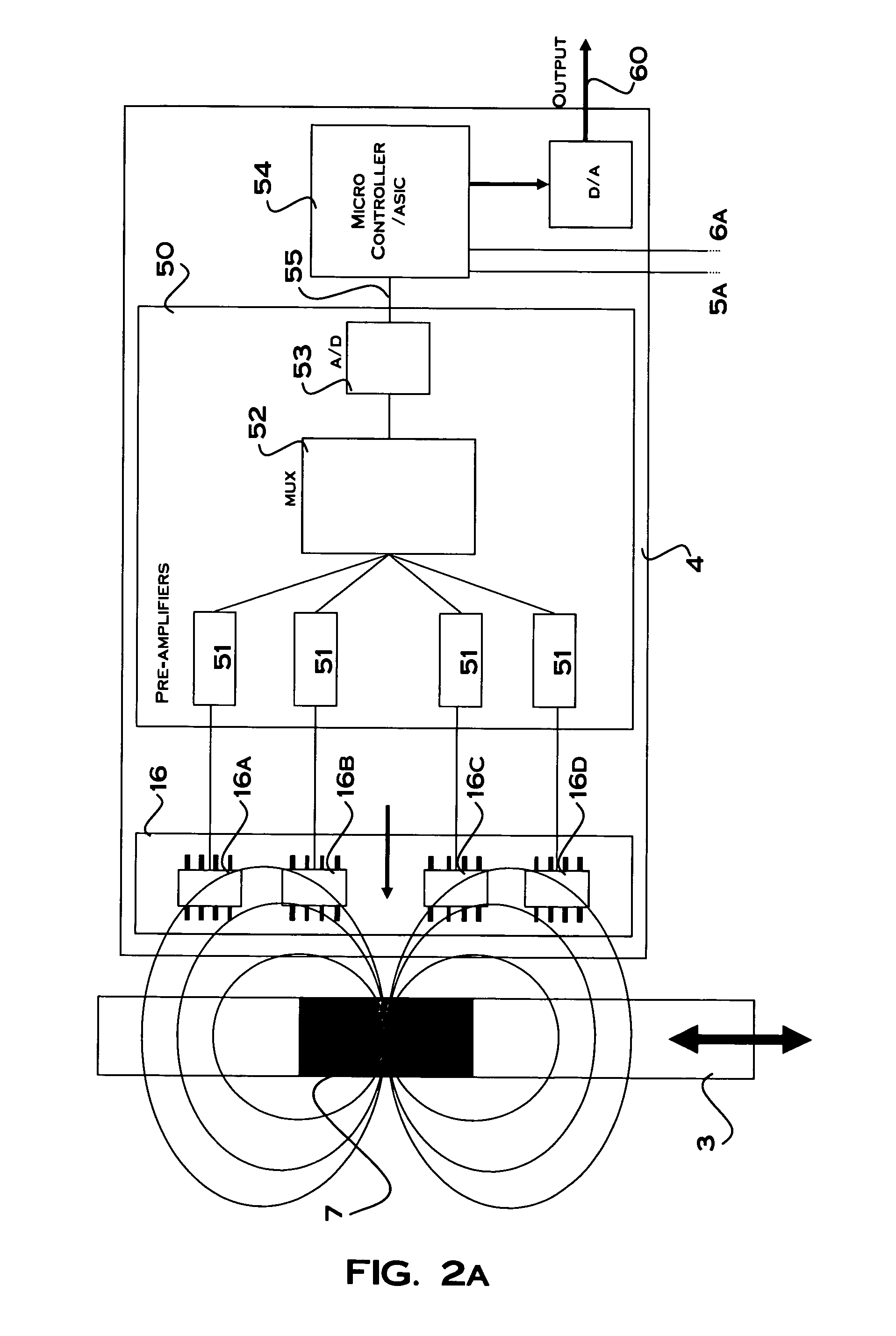Strain gauge sensor system and method
a sensor system and train gauge technology, applied in the direction of instruments, apparatus for force/torque/work measurement, roads, etc., can solve the problems of easy breakage, huge financial consequences of any mooring accident, and partial or even total breakage of platforms or vessels
- Summary
- Abstract
- Description
- Claims
- Application Information
AI Technical Summary
Benefits of technology
Problems solved by technology
Method used
Image
Examples
Embodiment Construction
[0041]The particular values and configurations discussed in these non-limiting examples can be varied and are cited merely to illustrate at least one embodiment of the present invention and are not intended to limit the scope of the invention.
[0042]Referring to FIG. 1 of the accompanying drawings, which illustrates schematic of a strain gauge sensor system for measuring strain in a line according to one embodiment, the sensor system 1 has a sensor target assembly 3 carried on a line 2 and includes magnets 7, 8, 9 spaced apart by gauge lengths 12 along the line 2. System 1 also includes first and second sensor devices 6, 4 for sensing the magnetic fields of the magnets 7, 8, 9.
[0043]The strain gauge sensor system can be applied in a number of different applications, such as, for example, mooring line deployment systems. The system 1 of the illustrative embodiment of the accompanying drawings is adapted for use in marine mooring applications in which the line is a high performance fib...
PUM
| Property | Measurement | Unit |
|---|---|---|
| elongation | aaaaa | aaaaa |
| gauge length | aaaaa | aaaaa |
| elongation | aaaaa | aaaaa |
Abstract
Description
Claims
Application Information
 Login to View More
Login to View More - R&D
- Intellectual Property
- Life Sciences
- Materials
- Tech Scout
- Unparalleled Data Quality
- Higher Quality Content
- 60% Fewer Hallucinations
Browse by: Latest US Patents, China's latest patents, Technical Efficacy Thesaurus, Application Domain, Technology Topic, Popular Technical Reports.
© 2025 PatSnap. All rights reserved.Legal|Privacy policy|Modern Slavery Act Transparency Statement|Sitemap|About US| Contact US: help@patsnap.com



